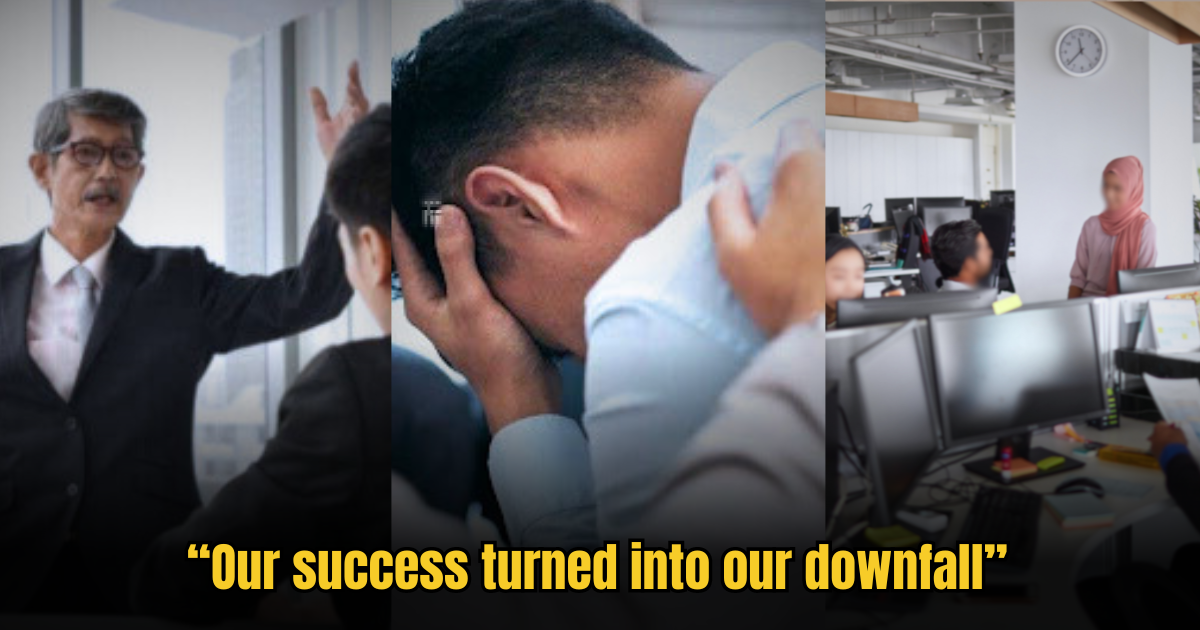Disclaimer: In Real Life is a platform for everyday people to share their experiences and voices. All articles are personal stories and do not necessarily echo In Real Life’s sentiments. Follow us on Facebook, Instagram, Telegram and Tiktok.

Here’s the story of how a company’s push for efficiency can turn into its downfall, unable to recognise the signs of burnout in their workers until it is too late.
Rizal was a fresh uni grad determined to get a full-time job. But there were three other interns and only one slot available. Competition was fierce. “From day one, the workload was enormous,” Rizal shared.
After 12 punishing days, Rizal asked his superiors if this was normal. “Around here it is. Don’t ask about more staff, management won’t like that,” he was told.
“I thought that was a little crazy,” he said, “But I kept my head down and didn’t cause trouble.”
Everyone started working 50-60 hours a week.
At this time, the company then took on a massive new project. In Rizal’s estimation, the size of this project was one they could not handle.
But after raising concerns about staffing to his superiors, it turns out they just didn’t consider it a priority. “We have no additional budget for manpower,” they replied.
“Management is confident from the fact that we are still able to hit the deadlines,” said Rizal’s superior.
If customers were happy, management honestly did not care about the severity of the situation.
While workloads increased, more help did not arrive, and business carried on as usual. More and more of Rizal’s colleagues worked late into the night and on weekends to meet the targets.
With strenuous efforts of 50–60-hour work weeks for three months, Rizal and his colleagues delivered the project on time.
The added workload created a Revolving Door situation.
“We streamlined a lot of things, implemented AI, and used a lot of shortcuts,” said Rizal.
However at this stage, there was always somebody on medical leave due to fatigue, stress, and burnout.
This started a revolving door situation: a cycle where employees do not remain in a position for long, requiring the position to be refilled frequently. With someone on leave, the others would pull together and take over their workload. This would inevitably lead to even more people taking leave at a time.
Meanwhile, the tools and workflows that had carried the team through the project were a stopgap.
“All the automation and AI doesn’t help when you don’t have enough staff to do the necessary work,” Rizal explained.
By the project’s completion date, almost 40% of the employees had taken time off to recover from physical exhaustion and mental fatigue. When bonus time arrived, however, there were no bonuses for anyone.
Though management kept silent on the matter, the overall message that workers took away from this was simple: Things are worse at other companies, so be grateful; if they didn’t like it, they could leave.
Eventually, Rizal did end up leaving. Exhausted mentally and physically broken down, he handed in his resignation and spent most of his lunch breaks sleeping at his desk.
Mass resignations began, creating a domino effect.
It turns out that Rizal’s resignation was not the only one. The first one to say “I quit” can trigger a cascade of departures, as nobody wants to be the last rat on the sinking ship.
At least five other people tendered their resignations. The last two weeks saw a lot of shuffling of workloads as people cleared their leave balances and never returned.
“When half your staff quit, management sits up and takes notice.”
Now awake to the problem, management started scrambling to hire and desperately negotiated to keep some staff on the way out.
To be fair to the management, hiring replacements does take time. It is understandable when a company cannot find employees with the right knowledge and skill sets in the short term.
But when you expect a heroic few to sacrifice themselves for the needs of a company, this has the potential to occur.
“They lost almost 3/4 of their programmers and engineers in a few months,” said Rizal, “If they had spent some money hiring, they’d still be around.”
What do you think of this story?
Share your thoughts in the comments!
Submit your story to ym.efillaerni@olleh and you may be featured on In Real Life Malaysia.
Read also: Angry M’sian Boss Demands Unpaid Overtime Over Raya, Causes 9 Staff To Quit
This story was first published on 2 May 2023.
Angry M’sian Boss Demands Unpaid Overtime Over Raya, Causes 9 Staff To Quit
You might also like
More from Real Careers
“Worst Choice I Ever Made,” Shares M’sian Man Who Started His Own Digital Marketing Business
A Malaysian digital marketer shares the reality of starting a solopreneur digital marketing business, citing bad clients as his reason …
I Earn RM15,000 Monthly as a Designer After Teachers Said I’d Have No Future
This story is about 30-year-old Sasha R. from Klang Valley who is living every Malaysian’s dream job, earning a 5-figure …
I Work as a Foodpanda Cyclist in Kuala Lumpur Here’s What It’s Really Like
This story is about a Malaysian who started working as a Foodpanda delivery guy who uses a bicycle to make …



















